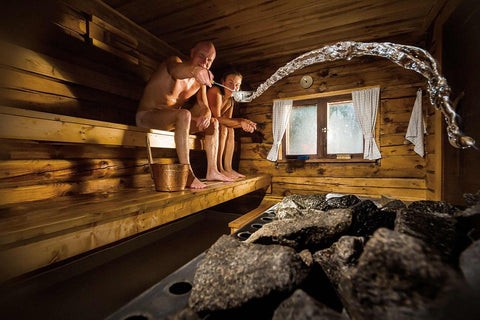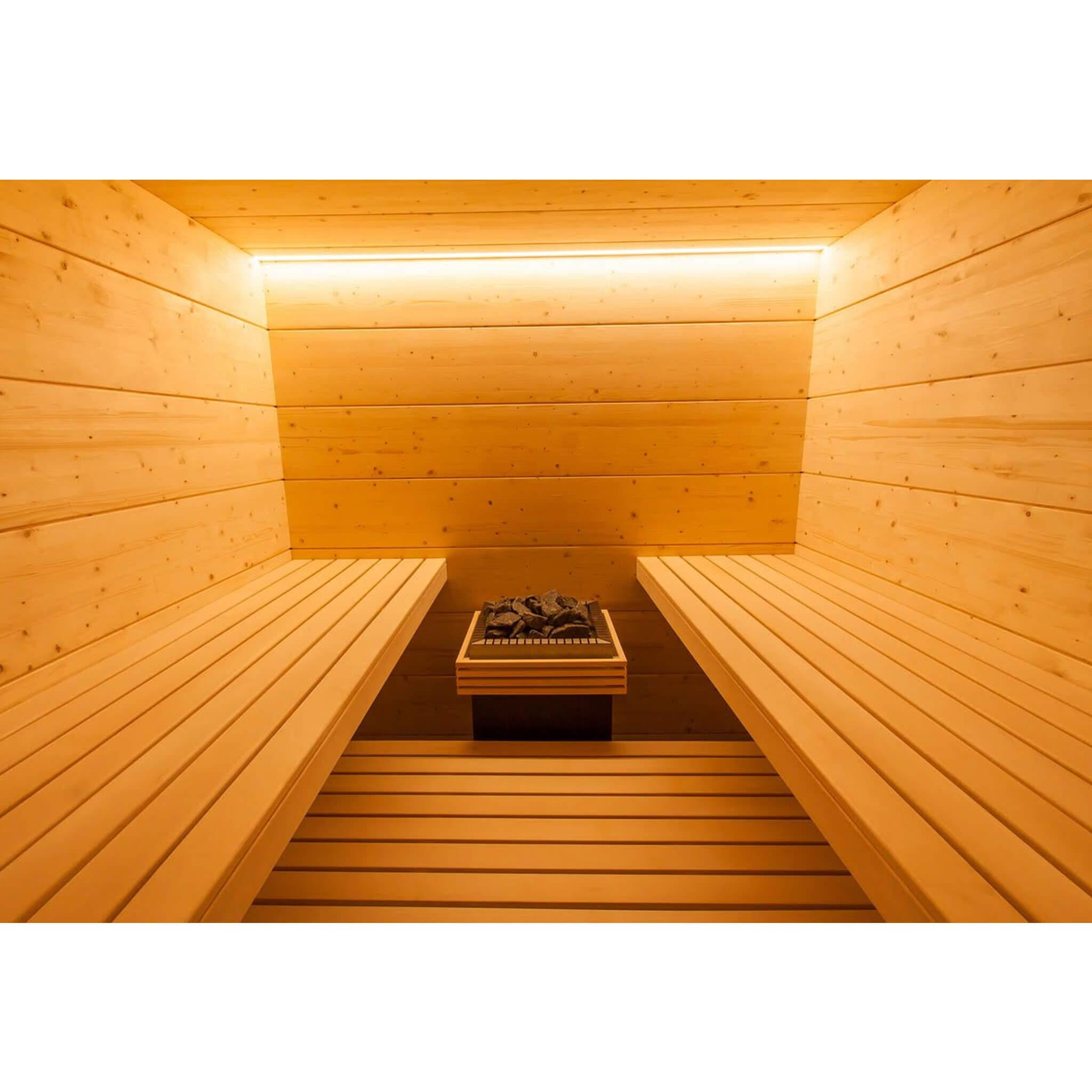Indicators on Traditional Sauna You Need To Know
Indicators on Traditional Sauna You Need To Know
Blog Article
How Traditional Sauna can Save You Time, Stress, and Money.
Table of ContentsExcitement About Traditional SaunaTraditional Sauna Can Be Fun For AnyoneThe Best Guide To Traditional SaunaSome Known Details About Traditional Sauna
The majority of the weight shed in a sauna is water loss and is re-gained upon rehydrating. Nonetheless, without an uncertainty sauna can be an integral part of a healthy and balanced weight loss program. To check out the distinctions between traditional and IR saunas, I will divide these right into proven, academic, and fabricated differences.Thus, the hottest factor in the saunawhich goes to the ceiling straight over the sauna heateris usually in between 185 and 190 F. Traditional Sauna. Claims that a standard sauna goes beyond 200 F is just not real and not suitable for electric saunas sold in the United States. The temperature level for a far-infrared sauna is normally established between 120 and 140 F; however, unlike the typical sauna, the objective in and IR space is not to attain a heat
Due to this, the temperature difference is practically unnecessary, since extreme sweating leads to both sauna kinds, however the method of heating up the body is different. In an IR sauna the bather will feel warm and will sweat a lot, however at a lot lower temperature levels. Therefore, if the objective is to spend longer time periods in the sauna, the IR sauna is a good selection.

Some Known Details About Traditional Sauna
When the heat is attained, the elements cycle on and off to maintain the high temperature level. A lot of traditional sauna customers enjoy putting water over the rocks to produce steam to raise sauna moisture degrees. The benefits of pouring water over the rocks include: making the space a lot more comfy, dampening the nasal flows, and allowing the use of aromatherapy by blending crucial oils with the water.
In a far-infrared sauna, the heat waves penetrate the body to properly heat up the body and raise the body core temperature. To attain this enhanced temperature level, Far-infrared emitters develop infrared power which is close to the same wavelength as that which the body normally emitsoften referred to as the "Vital Range" of 7 to 14 microns), so the energy is well received by the body.
When the energy goes into the body, it triggers the body temperature to increase and inevitably leads to sweating. In an infrared sauna it is very important for the emitters/heaters to stay on nearly read regularly. Considering that there is no mass of rocks to preserve warmth, the sauna will cool if the emitters shut down.
As pointed out over, the sauna bather in an infrared room desires to place himself before operating emitters to obtain maximum gain from the warm. The heating time for the two rooms can be extremely various, depending upon exactly how the spaces are made use of. For a typical sauna, a bather must permit 30-40 mins for the room to accomplish a wanted temperature and to effectively pre-heat the rocks.
Some Known Details About Traditional Sauna
A well created sauna will commonly attain a temperature level of 150-160 F in regarding 30-40 minutes. For hotter temperature levels, the area might need to warm for a longer duration.
To some, 15 mins was "lost" while the infrared energy heated up the timber panels rather than heating a body, while others find a pre-heated space to be extra comfy and think an elevated beginning temperature is necessary to start perspiring. The length of suggested usage for every space is around the exact same (10-15 mins per session); nonetheless, because of the lower click here to read air temperatures and the capability to feel the effects of infrared warm faster than a standard sauna, it is not unusual for an individual to spend a total amount of 20-30 minutes in an infrared sauna.
Conventional saunas have a tendency to be larger (hence use more electrical power) than infrared saunas, although traditional saunas are absolutely available in one and two individual dimensions. For a two-person conventional sauna, 5x6 or 5x7 dimension is most popular. The leading bench can pleasantly seat two or three individuals and is additionally long enough to relax during the sauna session.


The average cost per kWH of electricity in the U.S. is approximately $0.11, so a 4.5 kW heater will set you back around $.50 to run for one hour, if the heating system runs continually for one hour. Normally a sauna heater will compete 75% of the very first hour and 50% of succeeding hours on considering that the components cycle once the established temperature level is achieved.
Some Ideas on Traditional Sauna You Should Know
A 2 individual far-infrared area is normally literally smaller sized than a conventional sauna, often regarding 4' x 4' or smaller. The IR heating system is normally 1.5-1.7 kW making use of a 120 volt 15 amp plug-in solution. Get the facts Because the room can be utilized earlier than a sauna room, we will assume the area is utilized for to of an hour consisting of warm up time.
There is a seldom discussed distinction in the social experience in between the two rooms. While our culture has shed several of the social advantage of the standard sauna experience, it can be extremely socially gratifying. From household time in the sauna, to heart-felt discussions with better halves, to sauna partiesthe typical sauna experience can lead to intimate interacting socially.
The majority of higher end infrared rooms consist of colored light therapy, sound systems and full-glass fronts.
Report this page